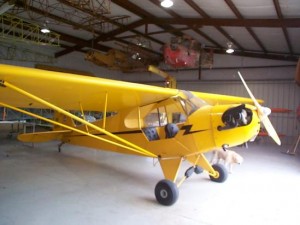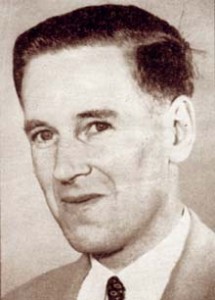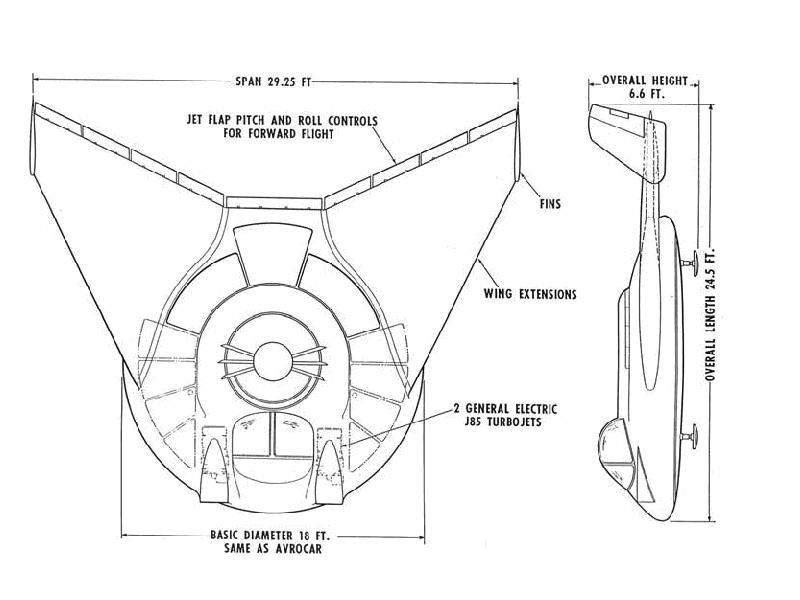How to Apply for DXCC Via the NZ DXCC Card Checker – September 2012
DXCC is the most prestigious of all Amateur Radio awards. Its rules for membership are clear and when you make your application, accuracy and attention to detail is most important. The guidelines below will help you complete your application to your Card Checker easily and with a minimum of problems.
The Responsibility of the Card Checker
The Card Checker may check cards for the following awards:
All DXCC awards and endorsements including the following:
- Mixed
- Phone
- CW
- RTTY
- Satellite
- 80 Meters
- 40 Meters
- 30 Meters
- 20 Meters
- 17 Meters
- 15 Meters
- 10 Meters
- 6 Meters
- 2 Meters
- 5BDXCC ( 5 Band DXCC)
- DXCC Challenge
- WAS (Worked All States)
- VUCC (VHF/UHF Century Club
Granting entity credits for all DXCC applications is done only at ARRL. The Card Checker’s job is ONLY to verify that the information on the paper application is the same as what is on the card(s) submitted. The Card Checker only checks the cards and does not award credits.
The Card Checker CANNOT check the following cards:
Any 160 M contacts (I do not hold a 160M DXCC)
Ineligible or Altered Cards
NOTE: A RECENT RULE CHANGE ALLOWS ME TO CHECK “DELETED” ENTITES
The Rules
Only eligible cards can be checked by DXCC Card Checkers. An application for a new award shall contain a minimum of 100 QSL confirmations from the list and shall not contain any QSLs that are not eligible for this program. The first-ever application must contain a minimum of 100 separate DXCC entities. First- time ever applications with less than 100 cannot be processed. It is the applicant’s responsibility to get cards to and from the DXCC Card Checker.
Applicants are responsible, up front, for all costs, including postage. It is strongly recommended that you keep a copy of all registered mail or other mail receipts. The ARRL is not responsible for cards handled by DXCC card checkers and will not honour any claims. The applicant and DXCC card checker must sign the application form. The applicant shall provide sufficient postage to the card checker to cover mailing of application and paperwork to ARRL HQ and return of cards within NZ. Direct Credit bank deposit may be required for the Card Checker’s postage costs in New Zealand if you don’t supply postage paid return envelopes.
The applicant shall also provide the applicable fees. Credit card number and expiration date is acceptable for the ARRL DXCC costs).
The DXCC Card Checker will forward completed applications and appropriate fee(s) to ARRL HQ. ARRL HQ staff will receive field-checked applications, enter application data into DXCC records and issue DXCC credits and awards as appropriate.
The applicant and the DXCC Card Checker will be advised of any errors or discrepancies encountered by ARRL staff. Applicants and DXCC members may send cards to ARRL Headquarters at any time for review or recheck if the individual feels that an incorrect determination has been made. Cards not eligible for field checking must be sent to ARRL and cannot be sent along with an application checked by the checker.
The applicant can opt to send the entire submission to ARRL if they wish. Ineligible cards, if sent to ARRL, are NOT considered part of the field checked application. They are considered a separate submission and subject to higher fees. Any ineligible cards sent with an application will be returned unprocessed.
To Submit an Application To The Card Checker
- The applicant should look through all the cards and check for the following:
- Your Main Application sheet must be the latest issue.
- Your callsign and the callsign of the station worked is on each card.
- The CALLSIGN, QSO DATE, BAND, MODE and ENTITY is on each card
- That the Entity Callsign and the Entity name match on each card
- The card has not been altered in any way.
- That you have at least 100 cards if you are making your Initial or First application.
- There are NO 160M cards.
The applicant should sort the cards in order – first by band, then by mode. Cards with multiple QSO’s must be together in a group of their own, at the end. Cards must NOT be sorted alphabetically. The Sort Order of the cards MUST MATCH EXACTLY the order of which the cards appear on DXCC application Form (Part 2 The listings)
Initial New DXCC Application Form Part 1
The information on Part 1 tells DXCC what you are requesting and it also tells them your current mailing address so that all returns can be sent to the proper address. There is also the applicant’s affirmation section. Check which award you are applying for eg: NEW, ENDORSEMENT, MIXED or PHONE or CW etc. Then list the Number of cards and the Number of QSOs
Complete the right hand side of the form with your name, callsign and all other details.
DXCC Fees for NZ are shown in DXCC Rules on this Website DXCC Fees Schedule
Endorsement Applications:
This is ONLY for building totals on Existing awards. Often people check off endorsements when they do not have an award but are only building totals for a future award. Once you have a DXCC you can build your number as you wish. There are no restrictions. When you finally reach 100 then you can check off NEW. Then, in future submissions you can endorse them. Your name and address is required as this affects where your paperwork will be sent AND where the yearbook will be sent. The yearbook is not sent to the QST address unless the DXCC address is the same as the QST address. You must sign and date it and place the month and year of your membership expiration if you are an ARRL member.
Applications have been placed on hold if the signature is missing.
Part 2: The Record Sheet:
This is the second part of the application where you list the QSO’s you intend to claim credit for with the submission. The importance of accuracy and legibility here cannot be emphasized enough. Cards may be rejected if complete information is not on the record sheet. The applicant’s callsign shown on the card must match exactly. If it is different in any way it must be rejected. (eg: ZL1ABC is not the same as ZL1BCA etc).
Sending Your Cards
Package up your cards and SIGNED Application form securely and send them to the NZ DXCC Card Checker:
Lee Jennings, ZL2AL
87 Auckland Road
Greenmeadows
NAPIER 4112
Mailing Suggestions
You may wish to use NZ Post Track and Trace services. You should purchase TWO Track n Trace envelopes from NZ Post or NZ Post Shops do a “Letter pack” for $5.50
1. Label the first envelope or Pack to me with the address above and your return address on the back.
2. Label the second envelope or pack to your home address with the address above on the back. I will return your cards in the same envelope.
3. Enclose a third business sized envelope (with a $2.40 NZ Post Stamp on it) addressed to:
DXCC Desk, ARRL HQ
225 Main Street
Newington CT 06111
USA
The third envelope will be posted by the card checker to the DXCC Desk with your application form inside.
Payment
The ARRL DXCC requires payment for all awards and endorsements. You can do that by simply filling in your Credit Card details on the right hand column of Application Form A. ARRL will then charge EXACTLY the amount required to your Credit Card in US Dollars converted to New Zealand Dollars. DXCC Schedule of Fees
Basic Do’s and Don’ts for DXCC Applicants
Do’s
Be careful, check closely every card carefully BEFORE submission.
Make sure applications are complete and information is legible
Make sure ALL data is recorded properly
Make sure entity name and callsigns match (this is a frequent problem)
If the record sheet is not in proper order, the applicant must re-do the application in the proper format.
Don’ts
Don’t leave fields that are blank on the record sheet, all fields are required
I strongly suggest that you look at the ARRL DXCC web site
It will give you insight into what the rules are all about.
If you have any problems with your application you can call me any time
06 844 1226 or 021 050 8164

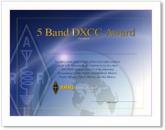
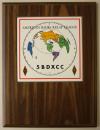
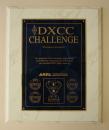 1,000 DXCC band-entities on any Amateur bands, 160 through 6 meters (except 60 meters). Plaques can be endorsed in increments of 500 entities for each band are totaled to give the Challenge standing. Deleted entities do not count for this award. All contacts must be made after November 15, 1945. QSOs for the 160, 80, 40, 30, 20, 17, 15, 12, 10 and 6 meter bands qualify for this award. Confirmations on bands with less than 100 entities are acceptable for credit for this award. Certificates are not available for this award.
1,000 DXCC band-entities on any Amateur bands, 160 through 6 meters (except 60 meters). Plaques can be endorsed in increments of 500 entities for each band are totaled to give the Challenge standing. Deleted entities do not count for this award. All contacts must be made after November 15, 1945. QSOs for the 160, 80, 40, 30, 20, 17, 15, 12, 10 and 6 meter bands qualify for this award. Confirmations on bands with less than 100 entities are acceptable for credit for this award. Certificates are not available for this award.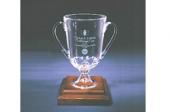
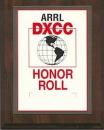

 Sep22
Sep22



